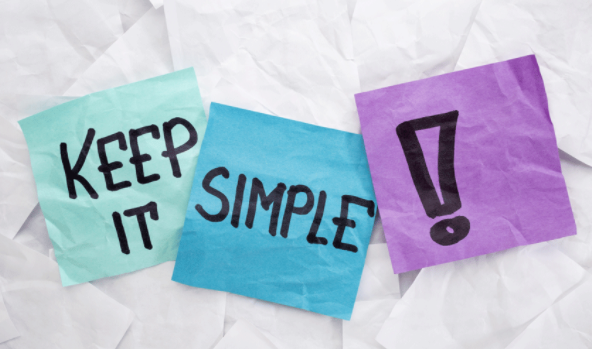Attributes are all those variations of the same product in terms of size, colour or finishes that have a different reference and EAN, but are essentially the same product. For example, the same T-shirt may have 3 colours available and 3 sizes of each colour, but it is essentially the same T-shirt. These variations are the attributes of the product. In the case of the example, the attributes of the T-shirt can be combined with each other, since for each colour there are 5 sizes, which would result in 9 different attributes on the same product card. The question that many professionals ask themselves is: do I group these attributes or do I create x different product sheets, one for each attribute?
Advantages and disadvantages of grouping attributes
Most online sellers see a key drawback in grouping attributes into a single file, and that is that the user does not see all the variations of the product at a glance: he has to enter each file to know how many attributes the product in question has available. This is particularly problematic in cases where the available attributes are colour variations. Most sellers argue that if the user only sees one of the many possible combinations, he will think that the product only has that colour, and if he was looking for another colour, he will leave the shop without buying anything.

As for the advantages, in some ecommerce platforms by grouping the attributes you get a main URL – the one corresponding to the parent product – and a URL with a pad for each attribute, which will make you able to share the URL of each of the attributes in social networks, by email or as you wish. In other words: if you group attributes, on some platforms you will have the URL product-parent.html, and for each attribute a pad will be added: product-parent.html#blue, product-parent.html#red, etc. The only handicap is that the pad’s URL is not indexed in Google -only the parent product’s URL does-, but it is certainly a very minor collateral damage: you will always be able to share the parent URL and let the user see and select the attributes himself once inside the product file.

The other advantage is that, in principle, it is more usable to group all the attributes in a single product sheet. The user expects to find the combinations grouped together, and will not be surprised if you have your attributes organized like this. It is true that in some sectors can be interesting to show at a glance the colour attributes, but ecommerce platforms are prepared to group the attributes precisely because at the level of SEO and usability is much less problematic.
Navigating through hierarchies
If we have grouped our products in Categories we can follow these tips:
- Classic families: let’s call the categories as they have been called in the physical shops for decades. Dairy products, mountain sports, power tools.
- Functional: let’s make another line of categories related to the function they perform. Moisturizers, relaxants for products and services related to health; office, home in stationery; security, computer entertainment…
Navigating through qualities
We all know that a complete product sheet, with a detailed description of the benefits and applications, improves our positioning and provides the user with information they may need when making a purchase decision.
But if that information is provided in the form of an attribute, it becomes actionable and comparative. Some examples:
- Ingredients: we can group products by their active ingredients (personal care) or ingredients (food) as well as components (physical products such as computers) or materials (textiles)
- Applications: recommended uses or for which the product is optimal (indoor or outdoor for gardening, office or computer games or laptops, oven or microwave for convenience food)
- Sizes and colours: for textile products (centimeters) computer (gigas or megahertz) hardware (cubic meters or litres)
- Public: preferred type of consumer (adult or child in food, amateur or professional for astronomical products, dog or cat for veterinary products)
Differentiation of the product by Physical Attributes
It is the physical and material characteristics of the product, composition, etc., that can be perceived by the senses, such as colour, smell, texture, sound, shape, etc.
Physical attributes are usually considered to be organoleptic qualities, composition, colour, smell, size, taste, quantity, design, packaging, labelling… And any others that can be perceived by the senses.
It is often said that when the consumer decides to buy a product, he or she really takes into account physical attributes such as colour or smell. Furthermore, there are attributes that allow the same type of product to reach different market segments. This is the case with size or quantity.
Product differentiation by Functional Attributes
These are those characteristics of the product that are related to the satisfaction of the need for which it was acquired, i.e. the profits or performance of the product.
Functional attributes are the range, cost, usability… And generally any others mentioned when dealing with physical attributes, can also be functional attributes, depending on the case. Design is increasingly seen as a silent seller.
Also, services offered in conjunction with the product, such as after-sales services, can be considered functional attributes. Whether it is a question of repair, maintenance, guarantee, etc.
Advantages and disadvantages of not grouping attributes
The main advantage of separating the attributes into several product sheets is that they allow the user to see all the attributes of a product from the category page, at a glance and without having to access the product sheet. But, as you will see, this is where the advantages end.
To begin with, the creation of a product file for each attribute generates a basic problem, which is that for each attribute you will have a product file with duplicate content. For example, if the Montana T-shirt has 3 colours and you decide to create a card for each colour, the description will be exactly the same in all 3 cards, and we already know that duplicate content is one of the things that Google penalises the most. So you can already imagine the shock you’re going to get if you do the same with a catalogue of, say, about 1000 product cards.
If you still decide that your shop needs to have separate attributes, there are two ways in which this practice will hurt you less. The first is to create the father cards and that the daughter cards – those of the attributes – have canonical redirections to the original card. This tells Google that there is a hierarchy between equal contents and that there is one main content, which is the one that commands; but in any case you will still have duplicate content that Google will index, so despite your canonical redirections you expose yourself to a Panda punishment. In addition, to do these redirections you need programming and SEO knowledge, so you will have to hire the services of an expert.
The second way to do it in a less harmful way is to avoid duplicating the content of the attributes sheets, which is very difficult because if the product is the same, it will be complicated to write 3 descriptions that do not resemble each other. In this case, what you save on the SEO and programming expert you will spend on a content professional, so in the end you have to consider if separating the attributes interests you enough to pay for doing it in a way that does not harm, or harm as little as possible, to your positioning.
In any of these cases, the URLs will give you problems, since to differentiate the URLs from the attributes you will have to add the differential attribute by hand-red, blue, etc. – in the product name and/or in the friendly URL. In this case, the URLs of the different attributes will be indexed, but you will not stop indexing duplicate or very similar content, something that will not be good for SEO. And, finally, the real work will be in the maintenance of the catalogue: if the stock of an attribute ends and you deactivate the corresponding file, you will generate a 404 error, something fatal for your SEO -which would not happen if the attribute was grouped with its brothers in the main product file.
In short, what do I do?
We at ByComercial recommend that you always group the attributes in the same product file. The product cards of the ecommerce platforms have been designed to group the attributes and combine them for some reason. While it is true that, as we said, depending on which sectors it may be interesting for the user to be able to see the different attributes without entering the file, it is also true that at the level of SEO it is more advisable to group them and at the level of ecommerce management you are going to save yourself a lot of time and money by doing so. There are other ways to get the user to see the colour attributes from the category page without entering the product file.






